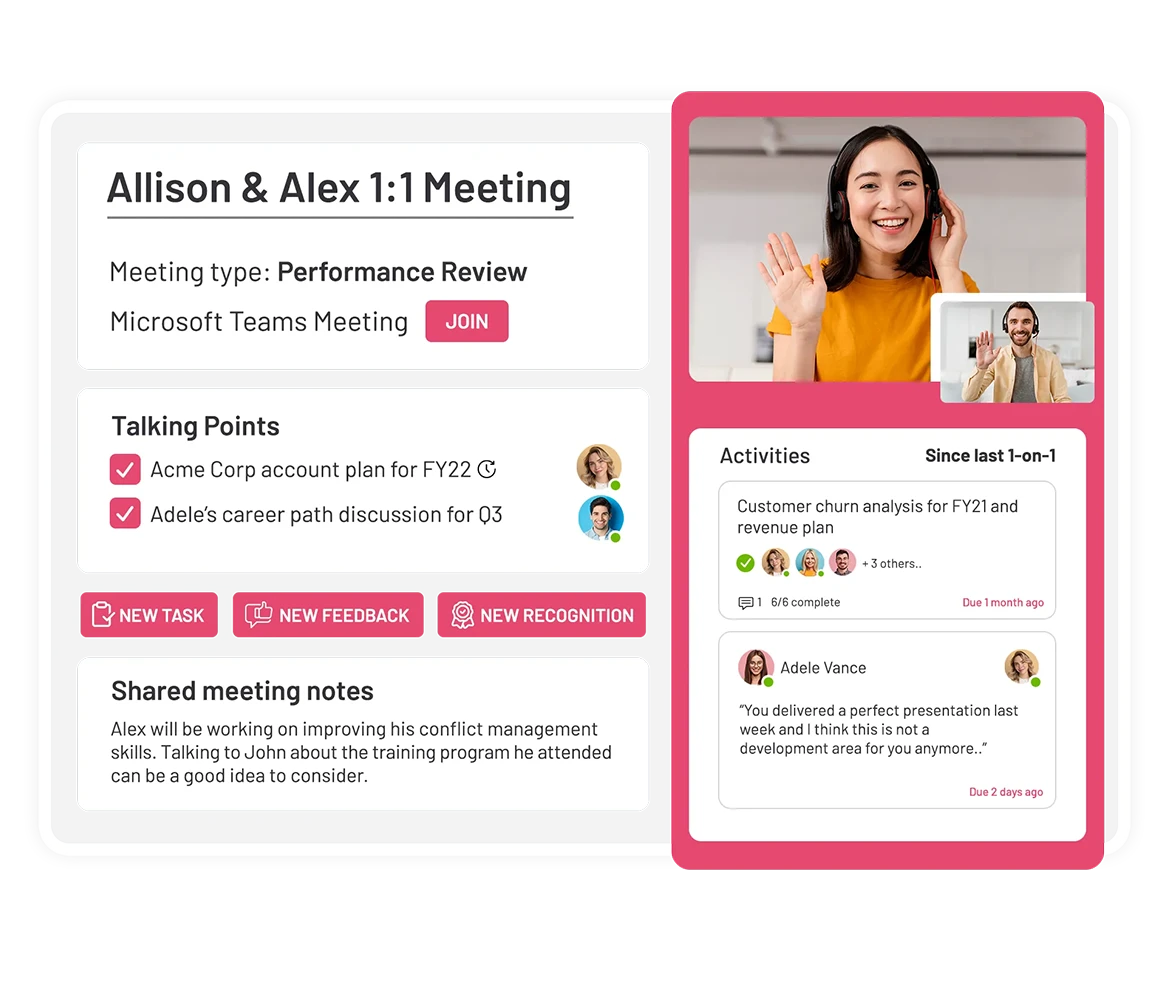Although there is no easy way of connecting with your employees, one on one meetings can assist you in building a stronger work relationship with your them by engaging in a productive dialogue.
Given the importance of one on one meetings, we designed 10 great one on one meeting templates for you to improve your meeting efficiency.
Table of Contents
Integrate Templates Into Your Virtual Meetings
Before we move forward, we’d like to tell you that you can transform your virtual meetings with ease by integrating templates directly into them!
You will not only streamline agendas, and collaboration but also elevate your virtual presence by using our templates!
You can click the button to use Teamflect completely free with full functionality for up to 10 users!



